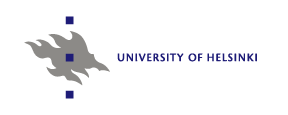- FIN-CLARIAH Research Infrastructure
A new national research infrastructure initiative FIN-CLARIAH for...
8.12.2021 8:12 by eahyvone - WarMemoirSampo published on December 3, 2021
A new “Sampo” application, “WarMemoirSampo”...
8.12.2021 8:04 by eahyvone - Five new SeCo papers accepted for the ISWC 2021
The 20th International Semantic Web Conference (ISWC 2021), the...
2.8.2021 6:53 by eahyvone
- Annastiina Ahola, Lilli Peura, Rafael Leal, Heikki Rantala and Eero Hyvönen: Using generative AI and LLMs to enrich art collection metadata for searching, browsing, and studying art history in Digital Humanities
- Eero Hyvönen, Petri Leskinen, Alexandre Lionnet, Blandine Blukacz-Louisfert, Pierre-Etienne Bourneuf, Davide Rodogno, Grégoire Mallard, and Florian Cafiero: Linked Open Data Approach to Study the Assembly Minutes of International Organizations and Their Underlying Prosopography in the Real World Context
- Eero Hyvönen, Petri Leskinen, Alexandre Lionnet, Blandine Blukacz-Louisfert, Pierre-Etienne Bourneuf, Davide Rodogno, Grégoire Mallard, and Florian Cafiero: A Linked Open Data Infrastructure for Studying Historical Activities of International Organizations: First Results on the League of Nations (1920-1946)
- Petri Leskinen, Eero Hyvönen, Alexandre Lionnet, Blandine Blukacz-Louisfert, Pierre-Etienne Bourneuf, Davide Rodogno, Grégoire Mallard, and Florian Cafiero: A Linked Open Data Service and Semantic Portal to Study the Assembly Minutes and Prosopography of the League of Nations (1920–1946)
Semantic Kalevala – The Finnish National Epic on the Semantic Web
What is Semantic Kalevala?
- Semantic Kalevala is a representation of the Finnish national epic in Semantic Web form as Linked Open Data. The epic has been annotated semantically by using the Finnish national ontology KOKO. It has also been annotated narratively in which its narrative structure and internal linkage have been demonstrated. The data has been linked externally with the Finnish national ontology infrastructure FinnONTO and various datasets there.
- Semantic Kalevala is also an application demonstrator, providing a window to the Finnish cultural heritage. Semantic Kalevala is part of the Finnish culture portal CultureSampo. Through semantic metadata, the epic’s text connects to the wide-ranging content of the portal, providing a contextualized and enhanced reading exprerience to the end user.
Semantic Kalevala and CultureSampo
An event-based annotation scheme has been applied to Semantic Kalevala, as it is also in use in the whole CultureSampo portal. Basically the annotation includes headlining of the event, locating the event in the text corpus (indicated in verse numbers), and keyword annotation using the KOKO ontology. The latter is the actual semantic part of the process. By keyword, we herein refer to an ontology class or instance attached to a certain event instance as metadata.
Every annotated event is anchored to a certain part of the text, a certain group of verses. All 50 Kalevala poems have been divided into small groups of verses corresponding to their respective events. In the process, the text’s own division into paragraphs has been taken into account. In the course of annotation, two distinct but complementary objectives have been pursued, presented here in order of importance: a) to picture Kalevala as precisely and faithfully as the ontology allows, and b) to produce as meaningful and interesting CulSa recommendations as possible. Recommendations will be described in greater detail later.
CultureSampo (CulSa, in short) is a portal of Finnish cultural heritage based on Semantic Web and Web 2.0 technologies. CultureSampo consists of a number of collections from over 20 Finnish memory organizations including museums, archives, and libraries. Together these collections make up a whole containing culture objects of varied media: museum items, works of art, photographs, folk poems and so on. Thus far, the portal contains hundreds of thousands culture objects which all have been annotated semantically in the same manner as Semantic Kalevala’s events. In addition, CultureSampo offers multiple views for browsing the content, e.g. through reading biographies, searching by map - or reading Semantic Kalevala.
In other words, Semantic Kalevala has a double role with regards to the portal. First, it constitutes its own culture heritage collection of 50 poems that connects to other collections of the portal. Second, Semantic Kalevala acts as a distinct view or window for browsing CultureSampo’s content. Reading Semantic Kalevala opens up diverse views to the portal’s content.
CultureSampo recommends varying objects according to the semantic metadata annotated in Semantic Kalevala. The objects recommended will share common attributes with the extract or part of text in question. In other words, the extract and the objects share common semantic metadata. For example, when the user is reading an extract of Kalevala concerning fishing, CulSa may recommend other fishing related objects, such as museum items or art, e.g. fishing nets or paintings that depict fishing. The recommendation is not static but instead will give a different result with every reading.

Screenshot of the user interface and the recommendations.
Narrative annotation of Semantic Kalevala
Unlike semantic annotation, narrative annotation passes through the semantic surface and examines the structure and internal linkage of the epic. It can be further divided into hierarchic and intratextual annotation. The goal here is to visualize the hierarchy and structure of the epic for the end user.
Kalevala has been divided into three levels of narrative hierarchy: episode, scene, and event. We call units of all four levels jointly narrative units. By episodes we mean units with clear beginning and end that bind together a group of successive scenes and a group of agents in interaction. However, episodes do not constitute a full-scale story but rather belong to a larger whole. Scene is a part of episode that covers a specific action with beginning and end. Events are units that describe one specific and simple action. If we consider dialogue a good example of a scene, the equivalent on the event level is a speaker’s line.
For indicating narrative coherence and internal linkage, the level of scenes has been chosen as the scope of annotation. The reason for this is that the nature of description is too specific on the level of events and too wide-ranging on the level of episodes. The annotation connects scenes in two ways: as scene chains and as scene references. Scene chain unifies a three-phase or four-phase series of scenes indicating a schematic development. The phases are 1) beginning, 2) progress, 3) climax, and 4) solution. The most important phases thematically are climax and solution: filtering them from the narrative is the starting point for building scene chains. In annotation, scenes relevant for the development of the story have been favored. Scene references include past and future reference. Past reference is embodied in such forms as storytelling, recalling, reminding etc., while future reference is represented in planning, promising, warning, predicting, and so on. Both are well represented in the epic.
Data publication
Semantic Kalevala is available as Linked Open Data at Linked Data Finland service.


